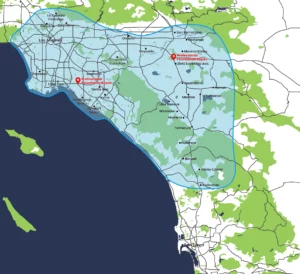Living in California offers a myriad of advantages, but it also comes with the constant threat of earthquakes. As a California-based foundation repair company, we understand the critical role that earthquake foundation retrofit plays in safeguarding your home and loved ones. In this article, we will explore the significance of earthquake foundation retrofit, its benefits, and why it’s essential for homeowners in earthquake-prone regions like California.
Understanding Earthquake Foundation Retrofit
Earthquake foundation retrofit refers to the process of strengthening an existing building’s foundation to better withstand seismic forces. This is crucial in regions prone to earthquakes, such as California, where the ground’s movement during seismic events can exert enormous pressure on a building’s structure.
The Vulnerability of Unretrofitted Homes
Many homes in California were constructed before modern seismic building codes were established, leaving them vulnerable to earthquake damage. These older structures may lack the necessary reinforcement and flexibility to endure the shaking caused by seismic activity. Without earthquake foundation retrofitting, such buildings are at risk of severe structural damage, posing a threat to the safety of occupants.
Benefits of Earthquake Foundation Retrofit
- Enhanced Structural Integrity: Retrofitting strengthens the foundation, making the building more resistant to lateral forces, ensuring it stays intact even during powerful earthquakes.
- Protecting Lives and Property: By reinforcing the foundation, homeowners can reduce the risk of injuries and fatalities during an earthquake. Additionally, it helps preserve property and prevents costly repairs that may arise from severe structural damage.
- Compliance with Building Codes: Earthquake foundation retrofitting brings older buildings up to current seismic safety standards, ensuring compliance with local building codes and regulations.
- Preserving Heritage and Value: Many older homes in California hold historical and sentimental value. Retrofitting allows homeowners to preserve the heritage of their property while increasing its market value and appeal.
Earthquake Foundation Retrofit Process
The earthquake foundation retrofitting process typically involves several steps:
- Structural Assessment: Professional engineers evaluate the building’s foundation to identify weaknesses and areas that need reinforcement.
- Customized Retrofit Design: Based on the assessment, a custom retrofit design is created to address the building’s specific needs and enhance its seismic resilience.
- Reinforcement Installation: Skilled technicians carry out the retrofitting process, which often includes adding shear walls, installing foundation bolts, or upgrading the cripple walls to improve the building’s overall strength.
- Quality Inspection: The retrofit work undergoes thorough inspection to ensure it meets the required standards and complies with local building codes.
- Peace of Mind: Upon completion, homeowners can rest assured that their homes are better equipped to handle seismic events, providing peace of mind for themselves and their families.
Conclusion
Earthquake foundation retrofitting is an essential step in safeguarding California’s homes and communities from the potential devastation of seismic events. By taking proactive measures to strengthen their homes’ foundations, homeowners can protect their loved ones, preserve their property’s value, and contribute to the overall safety and resilience of their neighborhood. At Professional Foundation Repair, we are committed to providing expert earthquake foundation retrofit services to ensure that California’s homes remain strong, secure, and resilient in the face of earthquakes. Don’t wait for disaster to strike; take the necessary steps to earthquake-proof your home today!


